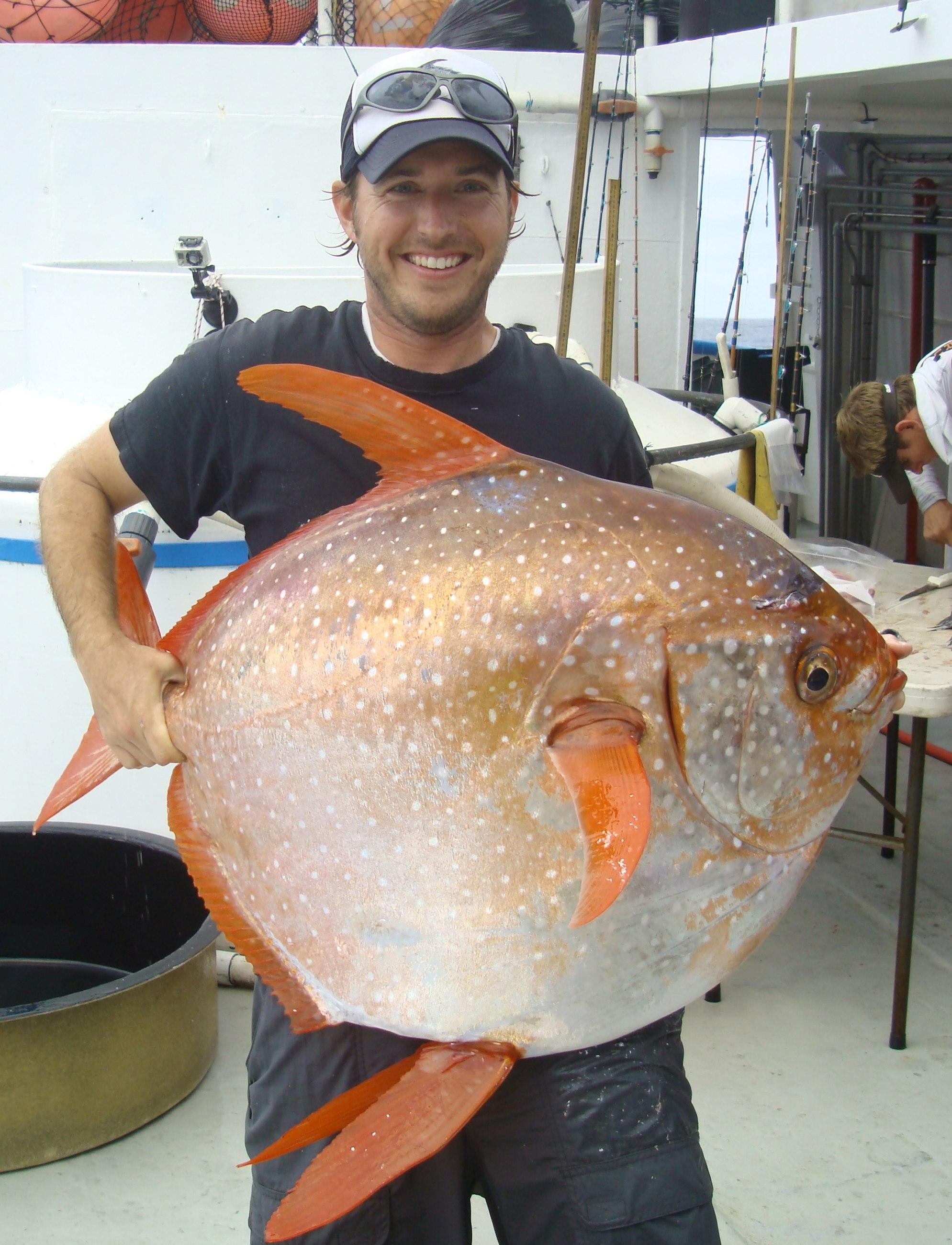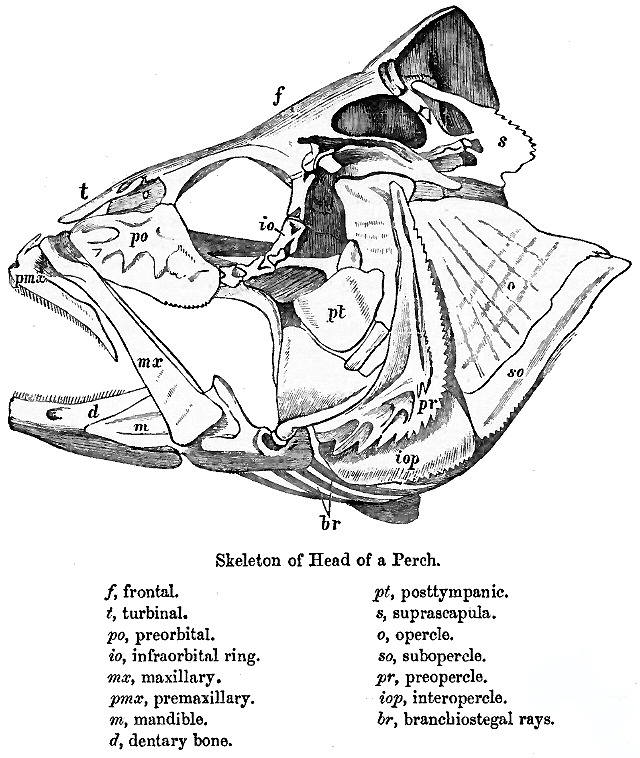|
Lampriformes
Lampriformes is an order (biology), order of Actinopterygii, ray-finned fish. Members are collectively called lamprids (which is more properly used for the Opah, Lampridae) or lampriforms, and unite such open-ocean and partially Deep sea, deep-sea Teleostei as the crestfishes, oarfish, opahs, and ribbonfishes. A synonym (biology), synonym for this order is Allotriognathi, while an often-seen, but apparently incorrect, spelling variant is Lampridiformes. They contain seven extant family (biology), families which are generally small but highly distinct, and a mere 12 lampriform genera with some 20 species altogether are recognized. They are the only extant members of the superorder Lamprimorpha, which was formerly diverse throughout much of the Late Cretaceous. The Binomial nomenclature, scientific name literally means "shaped (like the) bright (one)", as "lampr-", meaning bright, comes from ''lampris'', the generic name for the opah. In contrast, most other living lampriforms are ... [...More Info...] [...Related Items...] OR: [Wikipedia] [Google] [Baidu] |
Lamprimorpha
Lamprimorpha is a superorder of marine ray-finned fishes, representing a basal group of the highly diverse clade Acanthomorpha. Represented today only by the order Lampriformes (containing oarfish, crestfish, and opahs, among others), recent studies have recovered other basal fossil species of the group (most of which were previously classified in other clades) dating as far back as the Cenomanian stage of the Late Cretaceous. Some of these fossil taxa, such as the paraphyletic genus '' Aipichthys'', are among the oldest known fossil acanthomorphs, and overall they appear to have been a major component of the marine fish fauna at that time. Lamprimorpha is thought to be the sister group to the superorder Paracanthopterygii, which contains cod, dories, and trout-perches; however, Lamprimorpha may instead be sister to Acanthopterygii. It was initially described as Lampridomorpha, although this is considered a misspelling by ''Fishes of the World'', which refers to it as Lampri ... [...More Info...] [...Related Items...] OR: [Wikipedia] [Google] [Baidu] |
Oarfish
Oarfish are large and extremely long pelagic lampriform fish belonging to the small family (biology), family Regalecidae. Found in areas spanning from Temperate climate, temperate ocean zones to tropical ones, yet rarely seen by humans, the oarfish family contains three species in two genus, genera. One of these, the giant oarfish (''Regalecus glesne''), is the longest bony fish alive, growing up to about in length. The common name ''oarfish'' is thought to allude either to their highly compressed and elongated bodies, or to the now discredited belief that the fish "row" themselves through the water with their pelvic fins. The family name Regalecidae is derived from the Latin ''regalis'', meaning "royal". Although the larger species are considered game fish and are fished commercially on a small scale, oarfish are rarely caught alive; their flesh is not well regarded for eating due to its gelatinous consistency. Their rarity and large size, and their habit of lingering at the ... [...More Info...] [...Related Items...] OR: [Wikipedia] [Google] [Baidu] |
Lampris Guttatus
''Lampris guttatus'', commonly known as the opah, cravo, moonfish, kingfish, and Jerusalem haddock, is a large, colorful, deep-bodied pelagic lampriform fish belonging to the family Lampridae, which comprises the genus '' Lampris''. It is a pelagic fish with a worldwide distribution. While it is common to locations such as Hawaii and west Africa, it remains uncommon in others, including the Mediterranean. In the places where ''L. guttatus'' is prevalent, it is not a target of fishing, though it does represent an important commercial component of bycatch. It is common in restaurants in Hawaii. In Hawaiian longline fisheries, it is generally caught in deep nets targeting bigeye tuna. In 2005, the fish caught numbered 13,332. In areas where the fish is uncommon, such as the Mediterranean, its prevalence is increasing. Some researchers believe this a result of climate change. Much is still unknown about the distribution, interactions, life histories, and preferred habitats of this ... [...More Info...] [...Related Items...] OR: [Wikipedia] [Google] [Baidu] |
Lampris
The opah, also commonly known as moonfish, sunfish (not to be confused with Molidae), cowfish, kingfish, and redfin ocean pan are large, colorful, deep-bodied pelagic lampriform fishes comprising the genus ''Lampris'', of the small family Lampridae (also spelled Lamprididae). Species Two living species were traditionally recognized, but a taxonomic review in 2018 suggests the idea of splitting ''L. guttatus'' into several species, each with a more restricted geographic range, bringing the total to six. The six species of ''Lampris'' have mostly non-overlapping geographical ranges, and can be recognized based on body shape and coloration pattern. *Southern Spotted Opah ('' Lampris australensis):'' Found in the southern hemisphere, primarily in the Pacific and Indian oceans. *North Atlantic Opah (''Lampris guttatus):'' Potentially located in the Northeastern Atlantic, including the Mediterranean Sea. *Southern Opah ('' Lampris immaculatus):'' Geographical range extends ... [...More Info...] [...Related Items...] OR: [Wikipedia] [Google] [Baidu] |
Actinopterygii
Actinopterygii (; ), members of which are known as ray-finned fish or actinopterygians, is a class (biology), class of Osteichthyes, bony fish that comprise over 50% of living vertebrate species. They are so called because of their lightly built fish fin, fins made of webbings of skin supported by radially extended thin bony spine (zoology), spines called ''lepidotrichia'', as opposed to the bulkier, fleshy lobed fins of the sister taxon, sister clade Sarcopterygii (lobe-finned fish). Resembling folding fans, the actinopterygian fins can easily change shape and wetted area, providing superior thrust-to-weight ratios per movement compared to sarcopterygian and chondrichthyian fins. The fin rays attach directly to the proximal or basal skeletal elements, the radials, which represent the articulation (anatomy), articulation between these fins and the internal skeleton (e.g., pelvic and pectoral girdles). The vast majority of actinopterygians are teleosts. By species count, they domi ... [...More Info...] [...Related Items...] OR: [Wikipedia] [Google] [Baidu] |
Opah
The opah, also commonly known as moonfish, sunfish (not to be confused with Molidae), cowfish, kingfish, and redfin ocean pan are large, colorful, deep-bodied Pelagic zone, pelagic lampriform Fish, fishes comprising the genus ''Lampris'', of the small Family (biology), family Lampridae (also spelled Lamprididae). Species Two living species were traditionally recognized, but a Taxonomy (biology), taxonomic review in 2018 suggests the idea of splitting ''L. guttatus'' into several species, each with a more restricted geographic range, bringing the total to six. The six species of ''Lampris'' have mostly non-overlapping geographical ranges, and can be recognized based on body shape and coloration pattern. *Southern Spotted Opah (''Lampris australensis):'' Found in the southern hemisphere, primarily in the Pacific Ocean, Pacific and Indian Ocean, Indian oceans. *North Atlantic Opah (''Lampris guttatus):'' Potentially located in the Northeastern Atlantic, including the Medit ... [...More Info...] [...Related Items...] OR: [Wikipedia] [Google] [Baidu] |
Teleost
Teleostei (; Ancient Greek, Greek ''teleios'' "complete" + ''osteon'' "bone"), members of which are known as teleosts (), is, by far, the largest group of ray-finned fishes (class Actinopterygii), with 96% of all neontology, extant species of fish. The Teleostei, which is variously considered a Division (zoology), division or an infraclass in different taxonomic systems, include over 26,000 species that are arranged in about 40 order (biology), orders and 448 family (biology), families. Teleosts range from giant oarfish measuring or more, and ocean sunfish weighing over , to the minute male anglerfish ''Photocorynus spiniceps'', just long. Including not only torpedo-shaped fish built for speed, teleosts can be flattened vertically or horizontally, be elongated cylinders or take specialised shapes as in anglerfish and seahorses. The difference between teleosts and other bony fish lies mainly in their jaw bones; teleosts have a movable premaxilla and corresponding modifications ... [...More Info...] [...Related Items...] OR: [Wikipedia] [Google] [Baidu] |
Crestfish
Crestfishes, family Lophotidae, are lampriform fishes found in most oceans. It consists of two extant and four extinct genera. They are elongated, ribbon-like fishes, silver in color, found in deep tropical and subtropical waters worldwide. Their scientific name is from Greek language, Greek ''lophos'' meaning "crest" and refer to the crest (part of the dorsal fin) that emerges from the snout and head; this structure gives them their other name of unicorn fishes. The extant genera all possess ink sacs that open into their cloacae from which they can produce a cloud of black ink when threatened (as in many cephalopods). Genera References Lophotidae Animal families {{Lampriformes-stub ... [...More Info...] [...Related Items...] OR: [Wikipedia] [Google] [Baidu] |
Crested Oarfish
Crest or CREST may refer to: Buildings * The Crest (Huntington, New York), a historic house in Suffolk County, New York * "The Crest", an alternate name for 63 Wall Street, in Manhattan, New York * Crest Castle (Château Du Crest), Jussy, Switzerland * Crest House, a building, now in ruins, at the summit of Mount Evans in Colorado * Crest Theatre, a historic theatre in downtown Sacramento, California * Nimoy Theater, formerly Majestic Crest Theatre, Los Angeles, California * Crest Theatre, in Old School Square, Delray Beach, Florida Business or commerce * Crest (toothpaste), a brand of toothpaste * Crest Audio, an American manufacturer of power amplifiers and mixing consoles * Crest Animation Productions, an animation studio in Burbank, California * Crest Animation Studios, an animation studio in India * Crest Books, an imprint of now defunct Fawcett Publications * Crest Hotels, a defunct hotel chain in the UK * Crest Manufacturing Company, producer of the Cres ... [...More Info...] [...Related Items...] OR: [Wikipedia] [Google] [Baidu] |
Binomial Nomenclature
In taxonomy, binomial nomenclature ("two-term naming system"), also called binary nomenclature, is a formal system of naming species of living things by giving each a name composed of two parts, both of which use Latin grammatical forms, although they can be based on words from other languages. Such a name is called a binomial name (often shortened to just "binomial"), a binomen, name, or a scientific name; more informally, it is also called a Latin name. In the International Code of Zoological Nomenclature (ICZN), the system is also called nomenclature, with an "n" before the "al" in "binominal", which is a typographic error, meaning "two-name naming system". The first part of the name – the '' generic name'' – identifies the genus to which the species belongs, whereas the second part – the specific name or specific epithet – distinguishes the species within the genus. For example, modern humans belong to the genus ''Homo'' and within this genus to the species ''Hom ... [...More Info...] [...Related Items...] OR: [Wikipedia] [Google] [Baidu] |
Morphology (biology)
Morphology (from Ancient Greek μορφή (morphḗ) "form", and λόγος (lógos) "word, study, research") is the study of the form and structure of organisms and their specific structural features. This includes aspects of the outward appearance (shape, structure, color, pattern, size), as well as the form and structure of internal parts like bones and organs, i.e., anatomy. This is in contrast to physiology, which deals primarily with function. Morphology is a branch of life science dealing with the study of the overall structure of an organism or taxon and its component parts. History The etymology of the word "morphology" is from the Ancient Greek (), meaning "form", and (), meaning "word, study, research". While the concept of form in biology, opposed to function, dates back to Aristotle (see Aristotle's biology), the field of morphology was developed by Johann Wolfgang von Goethe (1790) and independently by the German anatomist and physiologist Karl Fried ... [...More Info...] [...Related Items...] OR: [Wikipedia] [Google] [Baidu] |









